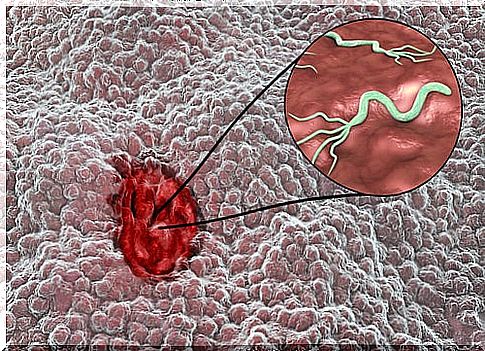Omeprazole
The omeprazole is the representative of the group of drug inhibiting drugs proton pump (PPIs) used for stomach problems as heartburn and gastritis among others.
We are going to explain the following aspects regarding omeprazole:
- Mechanism of action
- Pharmacokinetics
- Metabolism
- Adverse effects
- Interactions
- Indications
Mechanism of action
The stomach has an acidic pH due to the HCl produced by the parietal cells of the gastric mucosa. This characteristic acid pH of the stomach is essential for the digestion of food to achieve:
- Correct protein denaturation
- Activate pepsinogen to peptin so that proteolysis occurs, that is, the breaking of the peptide bonds of proteins.
- Prevention of bacterial infections, since bacteria do not usually survive in acidic environments.
With all this, an excessive secretion of gastric acid can lead to damage to the mucosa of the gastrointestinal tract, mainly producing stomach and duodenal ulcers.

Gastric acid secretion takes place in several steps:
- Separation of H⊕ and Cl¯ ions separately in parietal cells
- Its combination to form in HCl in the canaliculi
- Segregation of acid from the canicles to the lumen of the stomach
Proton pump inhibitors, such as omeprazole, act in the final step of acid production, binding irreversibly to the ATPase H⊕ / K¯ pump, with a pH-dependent binding being maximum at pH <6.
This inhibition occurs by the formation of a covalent SS bond between sulfonamide and an accessible cysteine residue of the proton pump, specifically, omeprazole links residue Cys-813 and Ces-892.
Pharmacokinetics
Omeprazole, like other PPIs, is administered in its neutral form, which is inactive. Being a neutral form, it will be lipophilic, that is, insoluble in water, and it will be able to easily cross cell membranes and reach the canaliculi of the parietal cells without problem.
In these cells, as they have an acid pH, they will transform the neutral form of omeprazole to its active protonated form, thus being able to carry out its mechanism of action and irreversibly bind to the proton pump, blocking its action.
- It is acid labile, so oral preparations are enteric coated
- Its binding to plasma proteins is high, greater than 95%, which increases its possibility of interaction with other drugs, since it may undergo a dose shift.
- It is absorbed in the small intestine and is normally completed within 3-6 h.
- The oral bioavailability is approximately 35%, and can be increased to 60% with repeated once a day.
- Its volume of distribution oscillates in 0.3 L / Kg
Metabolism
Omeprazole undergoes hepatic metabolism by the CYP 450 system. Most of its metabolism depends on the specific isoenzyme CYP2C19.
Most of the orally administered dose is excreted as inactive metabolites in the urine and the remainder in the faeces, mainly derived from bile secretion.
Adverse effects
It must be taken into account that omeprazole has a series of adverse effects, although not many due to its selectivity in its action, which must be taken into account if this drug is being administered. Among others we find:
- In prolonged treatment it can produce severe hypomagnesemia
- Increases the risk of bone fractures
- Skin disorders such as rashes or itching
- Gastrointestinal disorders such as diarrhea, constipation, abdominal pain, nausea, or vomiting

- Peripheral neuropathy
- Hypersensitivity
- Hemolytic anemia
- Reduces the absorption of vit B12, thereby increasing the risk of megaloblastic anemia
- Risk of subacute cutaneous lupus erythrematosus
- It raises the levels of chromogranin A, a protein that is elevated in certain types of cancer.
Omeprazole interactions
Omeprazole interacts with many drugs if they are administered simultaneously reducing or enhancing their action.
- It can reduce the action of:
- Clopidrogrel
- Antifungal
- Phenytoin
- Rifamycin
- Mycophenolate
- Others
- It can increase the action of:
- Methotrexate
- Amphetamines
- Benzodiazepines
- Carvedilol
- Citalopram
- Escitalopram
- Cyclosporine
- Warfarin
- Others
Ultimately, it can interact with many drugs, so if you are taking omeprazole with any other medication, you should consult your doctor for the prevention of possible complications.
Indications
This drug is of choice for:
- Gastric ulcer
- Duodenal ulcer
- Reflux esophagitis
- Zollinger-Ellison syndrome
- Gastritis
- Functional dyspepsia









